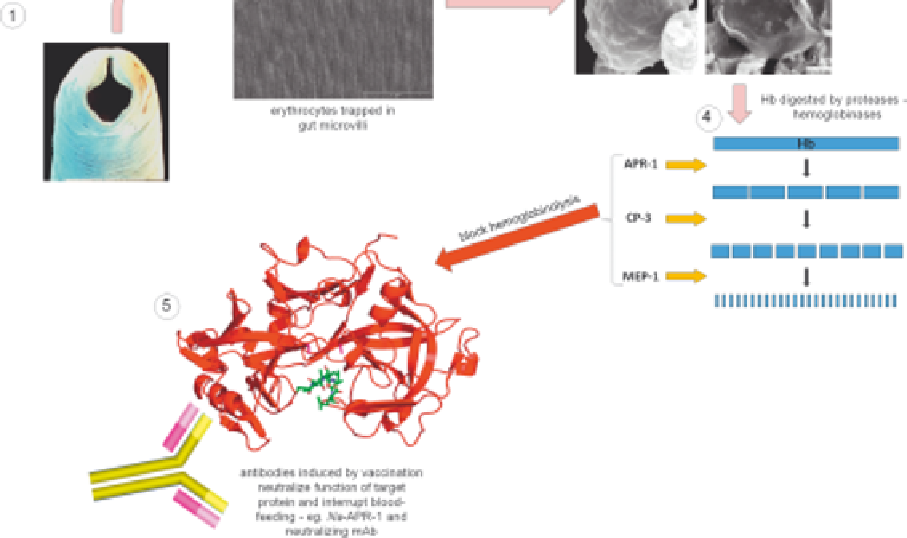Biomedical Engineering Reference
In-Depth Information
Figure 8.1
Schematic representation of the molecular aspects of the blood-feeding process in the human hookworm Necator americanus.
Adult worms in the gut ingest blood (step 1) and erythrocytes become trapped in the gut microvilli (step 2). Parasite hemolysins
drill pores into the erythrocytes (step 3), releasing hemoglobin into the parasite gut lumen. Hemoglobin is digested by the
hierarchical and ordered cascade of hemoglobinases (APR1, an aspartic protease; CP3, a cysteine protease; MEP1, a metallo-
proteinase) lining the brush-border membrane of the parasite gut (step 4). The globin peptides and free amino acids that are
released following hemoglobin digestion are then available to be absorbed into the gut cells. Antibodies that could be induced by
vaccination to neutralize the function of target hemoglobinases and interrupt blood feeding are shown (step 5).

